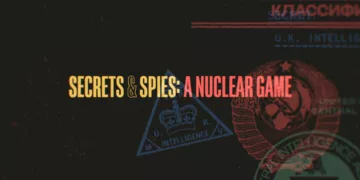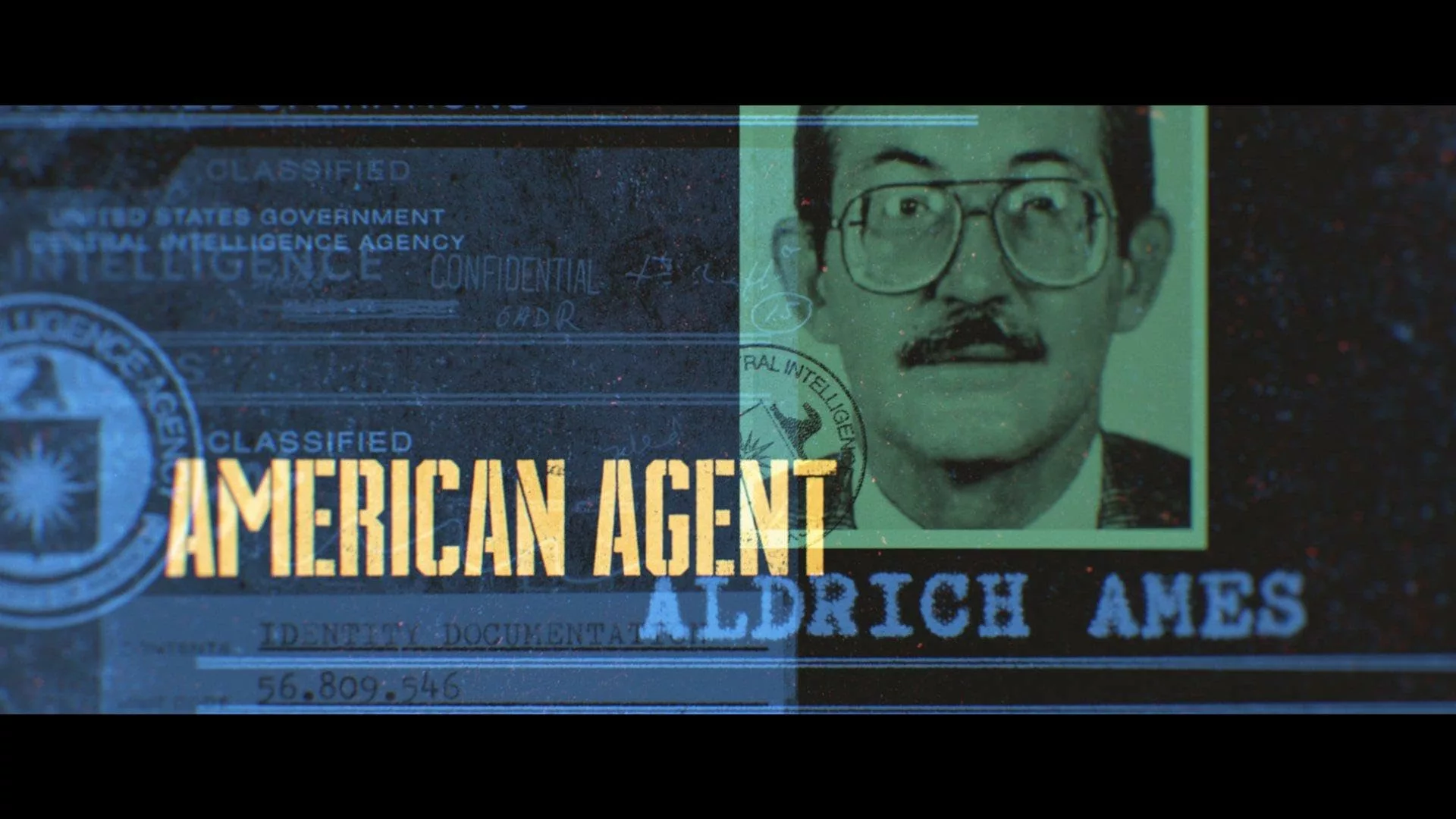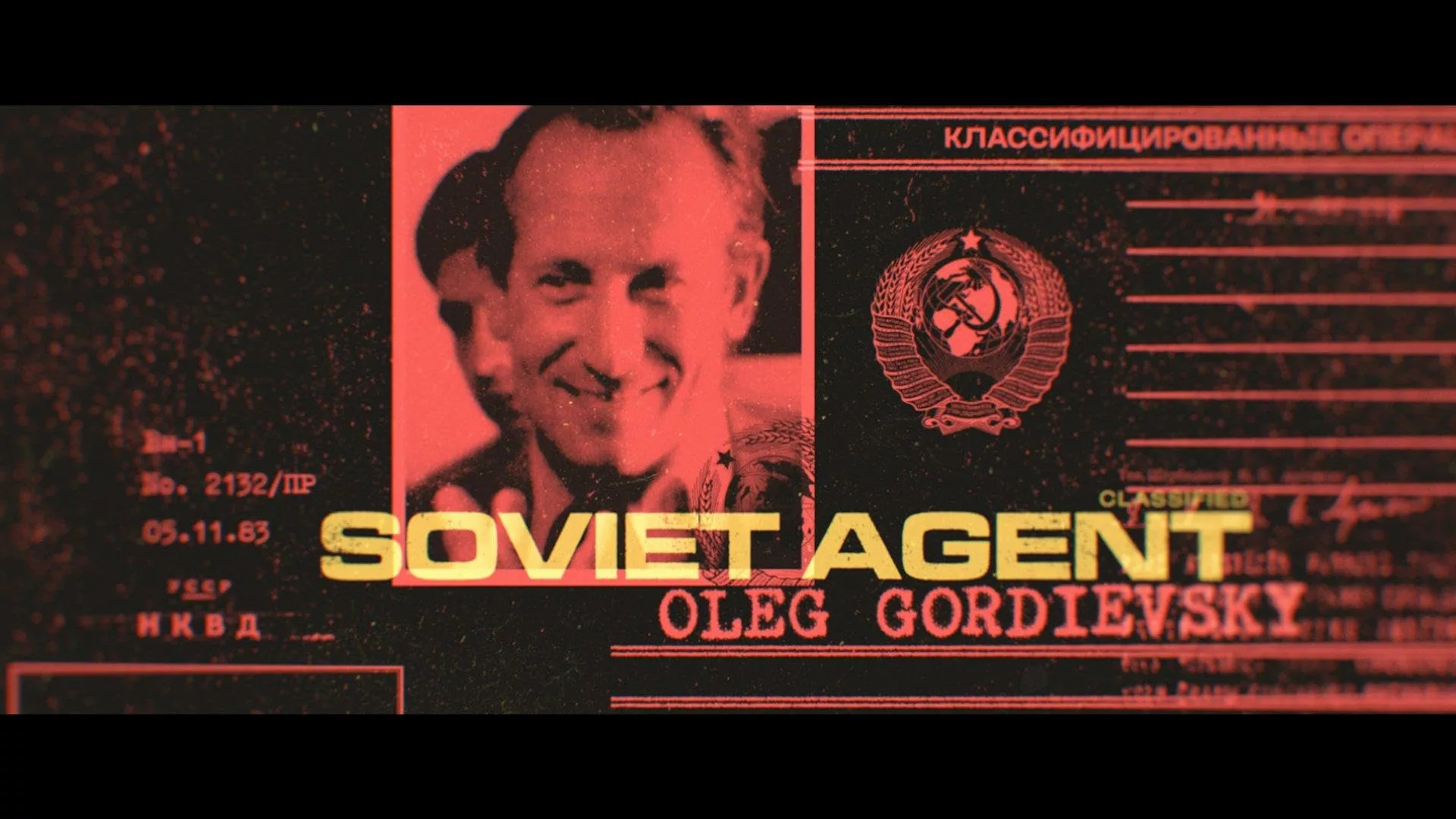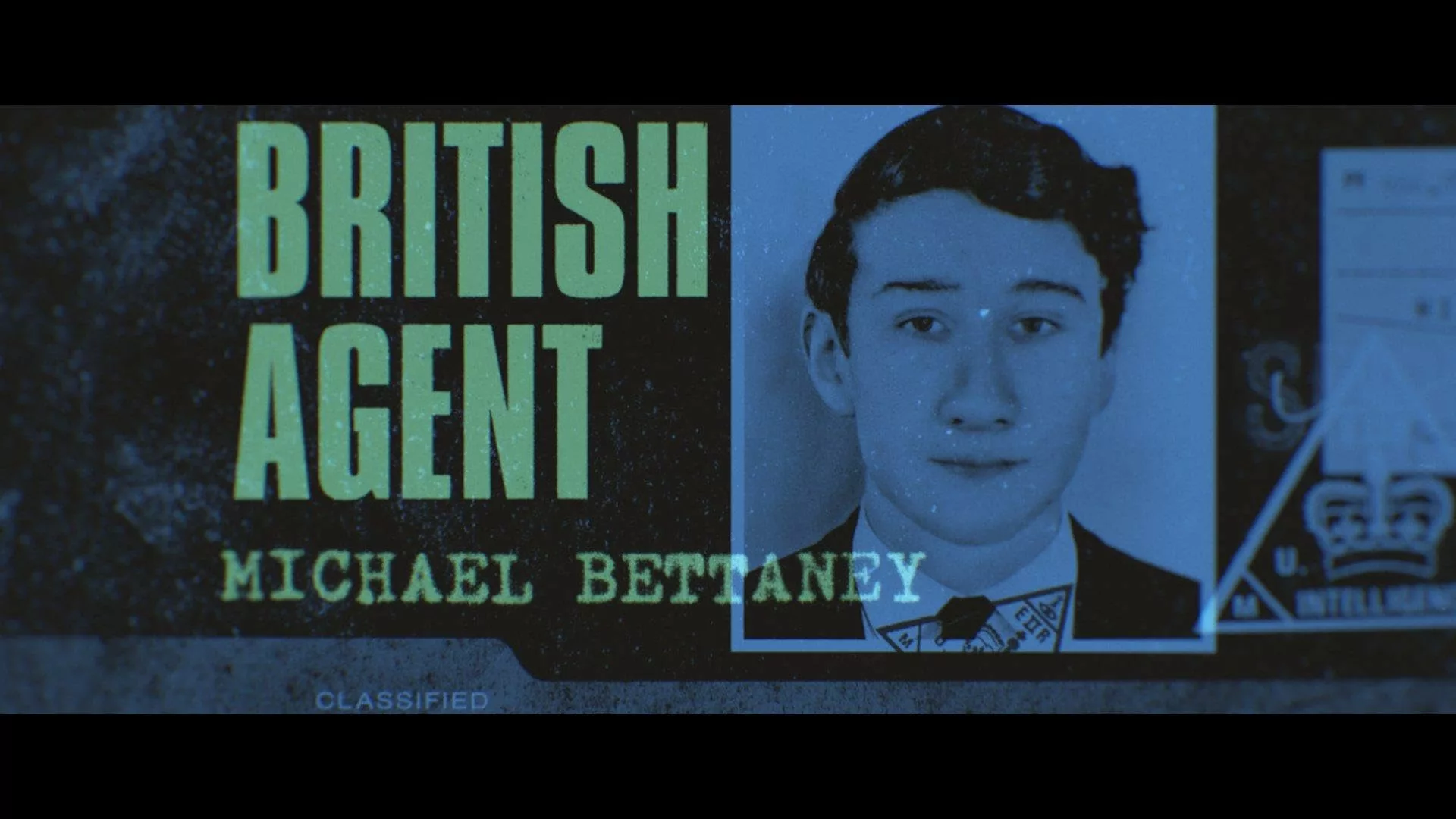During the fraught days of the Cold War, brave souls risked everything as double agents, choosing to serve two masters and help bring an end to the nuclear standoff between East and West. The gripping BBC series Secrets & Spies: A Nuclear Game shares their fascinating, little-known stories through the voices of those who lived them.
Told across three episodes, the show profiles three spies who worked for opposing sides amid the tensions of the 1980s. First, we meet Oleg Gordievsky, a KGB man stationed in London who became a spy for MI6. His daring exfiltration from Moscow, code-named “Operation Pimlico,” reads like a le Carré scene. Yet for all the secrecy and intrigue, Gordievsky simply wanted to help reduce the threat of conflict between his native USSR and the nations he came to see as allies.
We also hear from former MI5 officer Michael Bettaney and CIA operative Aldrich Ames. But Secrets & Spies doesn’t just recount cloak-and-dagger missions. It places these shadowy figures in their historical context, reminding us of the pervasive fear on both sides during the Cold War, when entire populations lived under the shadow of nuclear annihilation. Politicians faced pressure to project strength at a time when just one miscalculation could have apocalyptic consequences.
Through its blend of interviews, archival footage, and glimpses behind closed doors, this series transports viewers back to a globe defined by geopolitical rivalry, even as hope emerged through quiet diplomacy and surprising connections between once-warring leaders on either side of the Iron Curtain. For anyone hoping to better understand the tensions of the era, these intriguing true stories offer insight into how courage and compassion helped reduce the threat of destruction when facing down an immense adversary.
Daring Escape from the Iron Curtain
The series kicks off by focusing on one of the most audacious spy swaps of the Cold War. Oleg Gordievsky served as a senior KGB officer in London but was secretly working for MI6 and providing key intelligence to British agents. However, his identity was eventually compromised, and exfiltrating him from Moscow alive became an urgent priority.
Dubbed “Operation Pimlico,” Gordievsky’s escape involved clever espionage tricks and more than a few lucky breaks. Upon returning to the Soviet Union for family reasons, Gordievsky was secretly signaled to get to a dead-drop location by keeping an eye out for grocery bags from Harrods and Safeway. From there, an armored car hustled him to an airport as other agents created diversions to confuse potential KGB tailers. During a staged baby-changing pit stop, sniffer dogs were kept busy examining an actual baby while Gordievsky slipped out the back and into the waiting jet.
Those involved recall the precision and tense nerves required to spirit such a high-value defector away from the grasp of the KGB. Raymond Asquith, who drove the getaway vehicle, shares how “frightened” he felt under such dangerous pressures. The series also includes interviews with other participants, like former spies and intelligence officers, giving new dimension to this gripping period of espionage during the Cold War’s twilight years.
Across the first three episodes, viewers are treated to once-secret spy maneuvers and political machinations coming to light. Through the lens of Gordievsky and others, we catch glimpses of courageous people who may have altered history through their risky double lives as covert arms in an unfolding game of intrigue between superpowers.
Shifting Winds in the Cold War
The show effectively sets the stage by giving us a feel for the political atmosphere during this volatile era. Life on both sides of the Iron Curtain was impacted by mounting distrust and saber-rattling as leaders felt compelled to project strength.
Through interviews, we pick up on the suffocating paranoia that permeated organizations like the KGB and CIA. With nuclear war always a looming threat, even the slightest moves were scrutinized for signs of aggression. Peace was a precarious prospect amid these heightened tensions.
Margaret Thatcher and Ronald Reagan faced pressure to take tough stances with the Soviet Union, but glimpses behind closed doors reveal they also explored more conciliatory paths. Intelligence shared by double agents helped shape their approaches, like when warnings of instability in Moscow drove Reagan to pursue diplomacy through his folksy “bus stop” speech.
By contrasting public posturing with private strategizing, the show sheds light on how perceptions on both sides were evolving. As old Cold War warriors retired and younger figures took over in the Kremlin, opportunities for improved relations gradually emerged. Step by step, the scene was being set for momentous meetings between former foes that helped reduce the risk of catastrophe.
Rising Through the Ranks
A central figure explored in depth is KGB officer Oleg Gordievsky. Born in Russia, he steadily rose through the Soviet intelligence apparatus over two decades. But discontent was growing as he saw the repressive nature of the regime from the inside.
Stationed in London during the late 1960s, Gordievsky’s disenchantment spurred him to secretly make contact with British security and become a double agent. From there, he provided invaluable details on KGB operations for years, as he was later promoted to head the whole Russian embassy’s spy program in London.
Though compromised and facing imprisonment or death if caught, Gordievsky bravely continued passing information to his MI6 handlers. His revelations helped Margaret Thatcher navigate relations with reformist Soviet leader Mikhail Gorbachev. But he knew too well how brutal the KGB could be, as evidenced by his daring exfiltration from Russia with British assistance in 1985.
Now residing safely in England at 85, Gordievsky’s present-day cautions against drawing attention seem understandable given his history. While he declined to appear on camera, his interviews offered rare personal insights from the perspective of someone who toed both sides of the Cold War divide for so long with cunning and courage.
The Fates of Double Agents
Oleg Gordievsky’s brave efforts as a double agent within the KGB provided some invaluable help to British leaders. His insights gave Margaret Thatcher a deeper understanding of the political landscape emerging in the Kremlin as older hardliners faded and reformers like Mikhail Gorbachev gradually took control.
This assisted Thatcher in navigating early interactions with Gorbachev in ways that may have reduced tensions as the Cold War entered its twilight hours.
Of course, Gordievsky risked execution for his courageous act of defiance. We also learn about two other double agents featured—one unfortunate, the other treacherous. MI5 officer Michael Bettaney got caught spying for the KGB and served time in prison. Meanwhile, CIA man Aldrich Ames did significant damage through his betrayal of Western assets before his capture.
By touching on these varied fates, the show highlights how the shadowy game of espionage played out in complex and unpredictable ways on both sides, with heroes and villains found in unexpected places. It was a high-stakes world where even the savviest operations went awry at times. Overall, the series sheds much-needed light on how intelligence work impacted the course of the Cold War.
Behind the Headlines
Parts of the series struck an unexpectedly nostalgic tone amid all the gripping spy drama. The archival news reports and footage transported viewers back to an intriguing era. Beyond what made the headlines, it was fascinating to catch rare glimpses of personalities usually seen through a much more formal lens.
Watching Thatcher briskly bustle about her kitchen in pearls, searching for teabags, presented a charmingly relatable snapshot of her daily routine. Likewise, Paxman’s offhand comment about Raisa Gorbachev gave a petty but amusing view beneath the polished surfaces of such highly choreographed international visits.
In both cases, these small personal details blended historical distance with a sense of recognizable humanity. They served as a reminder that even larger-than-life political figures still dealt with everyday tasks and privately held views aside from their iconic public personas.
Through such subtly refreshing angles on seminal Cold War moments, the production gleaned compelling character insights that brought a new dimension to the well-worn stories. It affirmed the value of preserving our shared cultural memory.
Behind the Iron Curtain
This riveting documentary series peeled back the Iron Curtain to share untold chapters from the Cold War’s climax. Viewers met defiant souls like Oleg Gordievsky, who courageously fed intelligence to the West from inside the KGB. They also glimpsed how political leaders maintained a delicate balance of fighting ideology while finding room for cooperation.
While focused on 1980s Britain, America, and the USSR, the show skillfully reconstructed the global tensions of the time. Revelations about the KGB/CIA rivalry and the constant nuclear brinkmanship highlighted how easily conflict could have escalated without careful diplomacy on both sides.
By drawing from a wealth of archives and interviews, it transported audiences to experience that era. Yet it also provoked reflection about how surveillance and information gathering have evolved today. While state secrets still rely on invisible “human sources,” much modern espionage involves cutting-edge hacking or cyberattacks with no physical risks to agents.
Overall, this nuanced look into recent history offered insight into quiet heroes who helped shift the ideological battleground through patience and understanding. It proves that even amid the darkest of standoffs, small opening gestures can ultimately lead to more peaceable solutions.
The Review
Secrets & Spies: A Nuclear Game
Gripping and illuminating, this documentary series sheds new light on pivotal Cold War events through the lens of secret operatives. Drawing on archival sources and firsthand accounts, it transported viewers back to an era of political subterfuge and nuclear tensions and revealed the unlikely figures who worked quietly to reduce East-West hostilities. While necessarily focusing more on strategies than human stories, the productions offered a compelling look at history in the making.
PROS
- Compelling true stories of double agents during a crucial period of the Cold War
- insight into the intelligence operations and leadership decisions on both sides
- Making use of archival footage and interviews to reconstruct past events
- Highlighting little-known heroes who helped reduce global tensions
CONS
- Mostly strategic overview with little psychological insight into individuals
- Sparse re-enactments or recreations in documentary format
- Narrow focus on 1980s Anglo-American dimensions of conflict
- Limited exploration of long-term impacts and outcomes



















































